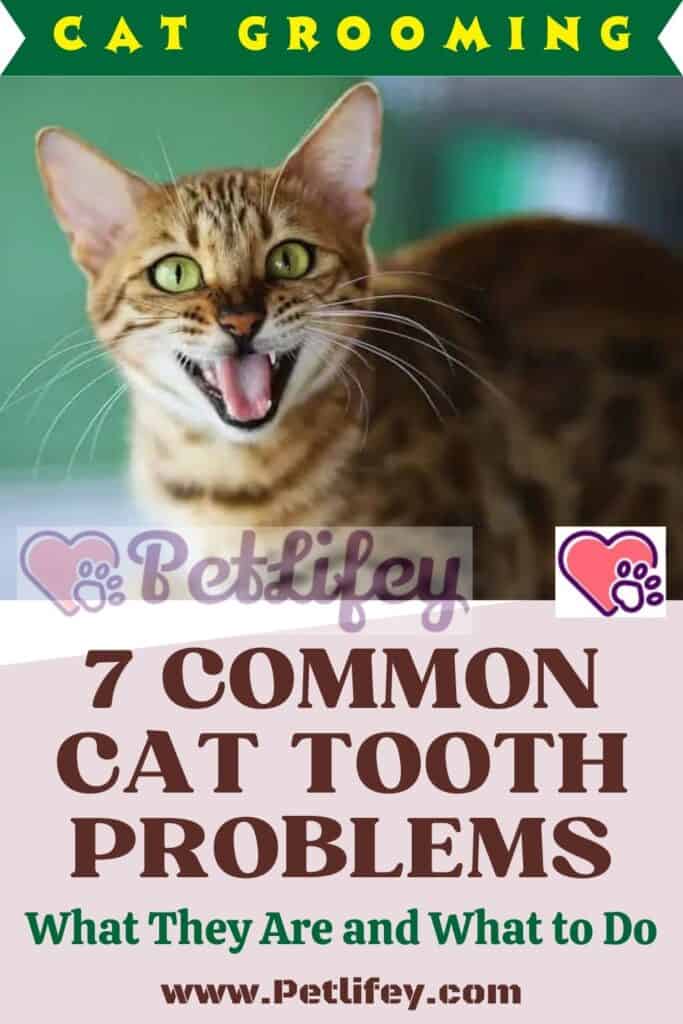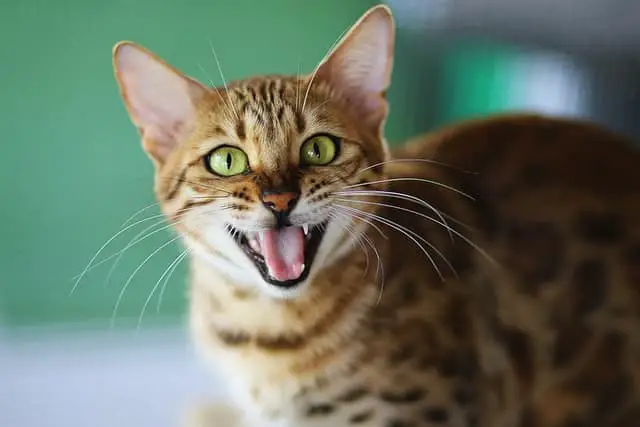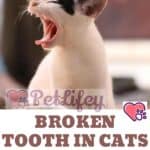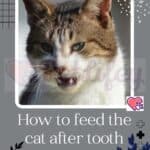
Good dental hygiene is important for the feline’s health, to avoid any problems. Here are 7 dental problems in cats that can occur easily.
Cats use their mouths for all activities, such as eating, hunting, biting toys, and even for their own cleaning. So the cat’s teeth are exposed to many different materials and bacteria, and they can develop various forms of dental disease over time.
Taking your feline regularly for dental cleanings and routine examinations will help avoid these problems. But let’s see together 7 most common dental problems that we can encounter in cats.
7 common cat tooth problems

Halitosis
Known as halitosis in cats, bad breath can be the result of multiple problems in the feline’s oral cavity, from simple periodontal disease to an infected mass.
Bad breath can also be the result of a systemic disease such as diabetes or kidney disease. It is important to monitor other symptoms in your cat as well, in fact if your cat has also had vomiting and diarrhea, difficulty swallowing, changes in appetite, you should call your vet as soon as possible. As these can be signs of a more serious underlying problem that needs to be addressed quickly.
Periodontal disease
Periodontal disease is the number one medical condition diagnosed in cats, even more so than weight problems, kidney disease or any other problem that is normally associated with felines.
By the age of three, most cats have some degree of periodontal disease, although early signs are often not present that can easily aid in detection and treatment.
This pathology begins as a buildup of plaque and tartar on the tooth. Over time, as the plaque spreads below the gumline, this leads to inflammation, infection and even eventual tooth loss in the cat.
Starting a home dental treatment regimen early can make a big difference in your cat’s life by keeping plaque and tartar lower.
Stomatitis
Feline stomatitis is an extremely painful condition caused by severe inflammation or ulceration of the tissues that line the mouth, gums, cheek, tongue, etc.
Although some breeds such as the Himalayan and Persian may be predisposed to this condition, stomatitis can be present in all cat breeds and can begin before a feline reaches the age of 1 year.
Cats that develop stomatitis have extremely red and inflamed mouths and are opposed to visiting the teeth . They often have a reduced appetite due to the pain of eating and, in severe cases, they can develop malnutrition.
While mild cases may respond to medical treatment and home care such as tooth brushing, the best results are seen with surgical cleaning, removal of affected tissues, and tooth extraction with dental x-rays to confirm complete removal of the teeth roots.
While this may sound extreme, many cats show amazing progress and return to normal eating habits very quickly after surgery, even if more teeth are pulled out.
Infection
Infections in the cat’s mouth can occur as secondary reactions to trauma, such as:
- Foreign bodies in the mouth
- Immunosuppression
- Tooth resorption
A generalized infection of the gum tissue causes swelling and redness, while a localized buildup of infection and pus can result in an abscess.
Tooth root abscesses cause pain and swelling in the jaw, which quickly spreads to surrounding tissues. You may notice a swelling of the face or even a protruding eye in the cat if the infection spreads to the area around the eye socket. It may also be noted that the cat does not eat or eats less.
Treatment should be instituted as soon as an abscess is diagnosed. This involves extracting the infected tooth or making a root canal, and treating the infection with antibiotics and pain control.
Tooth resorption
Resorption of feline teeth is a common and undiagnosed condition affecting up to three quarters of cats over the age of 5. The tooth is made up of both bone material, dentin and enamel, and the soft tissues of the tooth root, which includes blood vessels and nerves.
For reasons not fully understood, the body begins to break down dentin, which loosens the tooth and causes painful root exposure. Since this erosion begins below the gumline, it may be impossible to determine which teeth are affected without dental x-rays.
Symptoms are subtle, usually this problem is present in a cat that suddenly develops a preference for soft food, or swallows its food without chewing.
Tooth resorption can occur on a single tooth or on multiple teeth. Once diagnosed, the affected tooth must be extracted. This condition is very painful for the feline.
Cancer
Oral cancer in cats is the fourth most commonly diagnosed cancer in cats. Tumors can occur in the gums, lips, tongue, jaw, or palate. Signs of oral cancer include mouth masses, swelling of the face, cat drooling, weight loss, sudden tooth loss or bad breath.
Early diagnosis is the key to successful oral cancer treatment, which can be very difficult to manage when larger masses begin to invade the bone.
Many masses are found during routine cleanings and oral exams, when they are small they can be handled more easily, which is one of the many reasons regular preventive care is so important.
Fractures of the teeth
Fractured teeth are seen relatively often in felines. The most common fractures seen are on the tips of canine teeth, often called fangs, although premolar fractures are also common. In cats, the pulp tissue extends almost to the end of the tooth, which means that even small fractures can cause painful root exposures.
Most feline tooth fractures are caused by trauma to the oral cavity, although conditions such as tooth resorption can also weaken teeth and predispose them to breakage. Fractures above the gumline are visible to the naked eye, although some of them may extend below the gumline. Fractured teeth can also appear gray.
Treatment depends on the severity of the fracture and the tooth involved, and may involve extraction or root canals. It is important not to ignore fractured teeth in cats, as apart from being very painful, open fractures can lead to abscesses, facial swelling or systemic infections.






